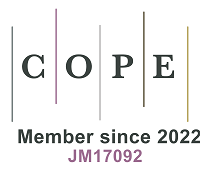REFERENCES
1. Ekino S, Susa M, Ninomiya T, Imamura K, Kitamura T. Minamata disease revisited: an update on the acute and chronic manifestations of methyl mercury poisoning. J Neurol Sci 2007;262:131-44.
2. Ministry of the Environment of Japan. Material flow of mercury in Japan, 2014. Available from: https://www.env.go.jp/en/chemi/mercury/mcm/004_material_flow_analysis_en.pdf [Last accessed on Jan 13 2023].
3. United Nations Environment Programme. Global mercury assessment 2013: sources, emissions, releases, and environmental transport. Available from: https://wedocs.unep.org/20.500.11822/7984 [Last accessed on Jan 13 2023].
4. Suvarapu LN, Baek SO. Recent developments in the speciation and determination of mercury using various analytical techniques. J Anal Methods Chem 2015;2015:372459.
5. Kopyść E, Pyrzyńslka K, Garboś S, Buska E. Determination of mercury by cold-vapor atomic absorption spectrometry with preconcentration on a gold-trap. ANAL SCI 2000;16:1309-12.
6. Lohren H, Blagojevic L, Fitkau R, et al. Toxicity of organic and inorganic mercury species in differentiated human neurons and human astrocytes. J Trace Elem Med Biol 2015;32:200-8.
7. Ministry of the Environment of Japan. Mercury analysis manual (in Japanese). Available from: http://www.env.go.jp/chemi/report/h15-04 [Last accessed on Jan 13 2023].
8. Cai Y, Monsalud S, Furton KG. Determination of methyl-and ethylmercury compounds using gas chromatography atomic fluorescence spectrometry following aqueous derivatization with sodium tetraphenylborate. Chromatographia 2000;52:82-6.
9. García-bellido J, Freije-carrelo L, Moldovan M, Encinar JR. Recent advances in GC-ICP-MS: focus on the current and future impact of MS/MS technology. Trends Analyt Chem 2020;130:115963.
10. Shigeta K, Tao H, Nakagawa K, Kondo T, Nakazato T. A simple and robust method for determination of alkylmercury in seawater and industrial wastewater by phenylation pretreatment combined with GC-MS. Anal Sci 2018;34:227-33.
11. Yang Y, Lin M, Tang J, Ma S, Yu Y. Derivatization gas chromatography negative chemical ionization mass spectrometry for the analysis of trace organic pollutants and their metabolites in human biological samples. Anal Bioanal Chem 2020;412:6679-90.
12. Yoshimoto K, Anh HT, Yamamoto A, et al. Simple analysis of total mercury and methylmercury in seafood using heating vaporization atomic absorption spectrometry. J Toxicol Sci 2016;41:489-500.
13. Koizumi A, Harada KH, Inoue K, et al. Past, present, and future of environmental specimen banks. Environ Health Prev Med 2009;14:307-18.
14. Allred A, Rochow E. A scale of electronegativity based on electrostatic force. J Inorg Nucl Chem 1958;5:264-8.
15. Duvinage D, Schröder A, Lork E, Beckmann J. New crystal structures of alkali metal tetrakis(pentafluorophenyl)borates. Main Group Met Chem 2020;43:99-101.
16. Stricks W, Kolthoff IM. Reactions between mercuric mercury and cysteine and glutathione. apparent dissociation constants, heats and entropies of formation of various forms of mercuric mercapto-cysteine and -glutathione. J Am Chem Soc 1953;75:5673-81.
17. Zachariadis GA, Kapsimali DC. Effect of sample matrix on sensitivity of mercury and methylmercury quantitation in human urine, saliva, and serum using GC-MS. J Sep Sci 2008;31:3884-93.
18. Watanabe T, Kikuchi H, Matsuda R, Hayashi T, Akaki K, Teshima R. Performance evaluation of an improved GC-MS method to quantify methylmercury in fish. Shokuhin Eiseigaku Zasshi 2015;56:69-76.
19. Cavalheiro J, Preud’homme H, Amouroux D, Tessier E, Monperrus M. Comparison between GC-MS and GC-ICPMS using isotope dilution for the simultaneous monitoring of inorganic and methyl mercury, butyl and phenyl tin compounds in biological tissues. Anal Bioanal Chem 2014;406:1253-8.







